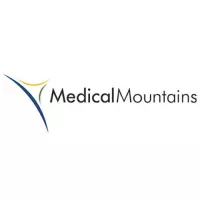Tuttlingen - “Making the theoretical practical”: With this claim, a working group within the Med Alliance BW, with the support of the ExpertTable CleanMed, has set about combining all the knowledge and know-how on the topic of “biocompatibility” in a single compendium – which has never existed in this form for medical technology in order to make it easier for manufacturers to find processes and documentation.
“I would have liked someone to take me by the hand and show me: Look, you can do it this way and that way.” Heike Schulz sighs when she thinks about her first biological risk assessments. What had to be proven was clearly formulated on paper. But for the how, the actual implementation, there was no template that she could follow. “I had to figure it out myself,” says Heike Schulz, “starting from scratch.” Today, the 33-year-old is a biocompatibility specialist at Aesculap AG - and is involved in the Med Alliance BW so that others receive the guidance that she sorely missed at the beginning of her career.
Heike Schulz is not alone with such experiences. Many had and are struggling with the complex requirements. At the first meeting of the working group, remembers Marena Rothermund from MedicalMountains GmbH, a central insight and thus a common goal was formulated: “There is a book for everything, except for biocompatibility.” The guide has been in development for many months been worked. Now it is finished. “A real collective effort,” says Marena Rothermund, delighted about a publication that has never existed in this form before – convinced that future users will be no less happy. “The compendium shows how a biological risk assessment can be set up,” summarizes Heike Schulz on behalf of the working group. It makes it easier to answer two essential questions: “What should happen – and how is it done?” In detail, this means: According to the modular principle, the chapters “Product Information”, “Biological Evaluation Plan” and “Biological Evaluation Report” show which elements to be taken into account. With your own input, company-specific processes can be derived from this. Raw materials, production, sterilization and packaging are taken into account equally; Subchapters provide explanations based on the relevant standard DIN EN ISO 10993-1. “For example, if there is a product change, you then know what the documents have to look like,” says Heike Schulz, emphasizing the advantage of a stringent process.
This version focuses on standard instruments and orthopedic implants. “The idea is to expand the compendium to include other products,” says Marena Rothermund, looking to the future. Because biocompatibility, adds Heike Schulz, is “like a bottomless pit. The process never stands still.” Accordingly, the “book” should live and develop further. A workshop is also conceivable to fill the structure together with other manufacturers in an exemplary manner. “Exchange is extremely important,” emphasizes Heike Schulz, both within the Med Alliance BW and with external companies – so that no one has to “start from scratch” anymore.
- The “Guidelines for preparing a biological assessment for medical devices according to ISO 10993-1” is available in two ways: through a 2023/24 participation in the Med Alliance BW or as an individual product in the MedicalMountains GmbH shop. More information at this link .





